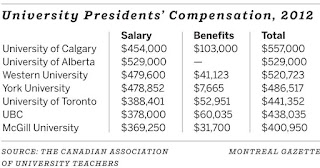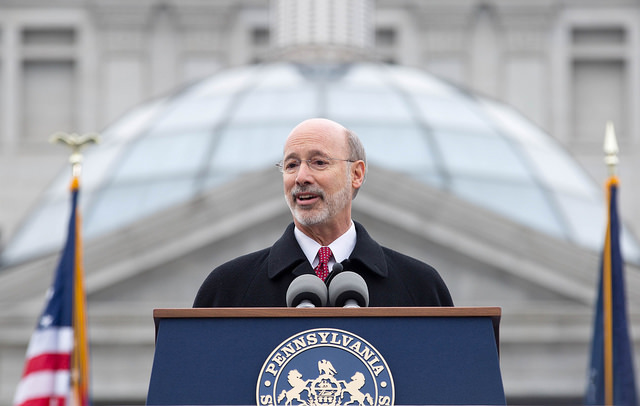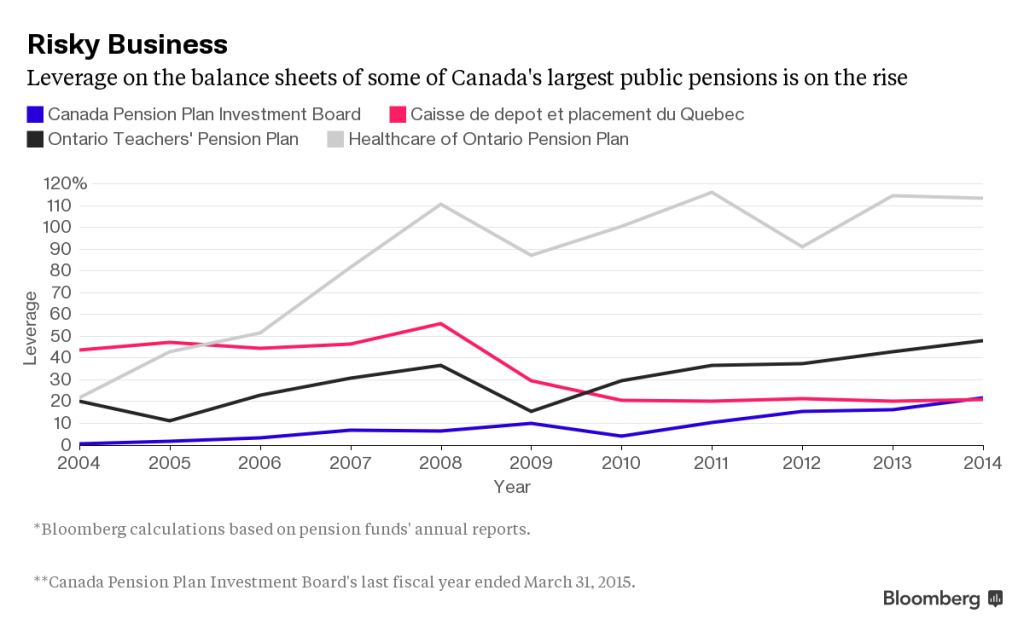
Leo Kolivakis is a blogger, trader and independent senior pension and investment analyst. This post was originally published at Pension Pulse.
Jake Burman of the Express reports, Now UK taxpayers forced to contribute billions towards Brussels bureaucrats’ pensions:
The cost of pensions for retired EU civil servants and MEPs has seen the EU’s estimated pension responsibilities soar by more than £8.6billion last year.
UK taxpayers will have to pay a staggering £5billion over the coming decades because of the swelling pensions bill – which also includes an extortionate £4.5billion in private sickness insurance.
European auditors have previously identified the pensions of retired Brussels bureaucrats as a major influence in increasing contributions from national governments towards the EU.
Pawel Swidlicki, from the think tank Open Europe, slammed Brussels for failing to control the rocketing EU pensions bill – despite enforcing brutal cuts on pensioners in EU countries like Greece.
He said: “The spiralling bill for EU officials’ pensions is the legacy of years of inefficient management and overly generous terms and conditions.
“The UK and many other countries have introduced tough reforms to make public sector pensions sustainable. It is high time the EU follows suit.”
David Cameron is aiming to reduce the EU’s administrative bill as part of his renegotiation of the UK’s relationship with Brussels.
However pensions pose a major problem for the Prime Minister.
Last year, the UK hopelessly failed to halt a cut to the contribution paid by Brussels bureaucrats towards their pensions – which reduced from 11.6 per cent to 10.6 per cent.
It came despite the fact the cost of servicing EU pensions will increase by a staggering 5.2 per cent next year.
The number of retired EU staff claiming a pension worth 70 per cent of their final basic salary is also expected to increase by 4 per cent in 2016 – which will take the annual bill to £1.1billion.
A spokeswoman for the European Commission said the dramatic increase was caused by a “significant decrease in the interest rate”.
She said: “This is an estimate of the value of the total liability at a given point in time.”
“It probably will never be paid as it stands.”
Increasing numbers of retired MEPs are also paid under the EU pensions bill – despite of not contributing towards their own pension.
The pension is currently worth £13,760 for each five-year term served as MEP, while the schemes liabilities have grown to more than £230 million over the last five years.
Forget the chocolates, the beer and the moules frites. The most rewarding way to pass the time in Brussels is to sit behind a desk at the commission, the council, the parliament or indeed any of the EU’s principal institutions, accruing years in their extraordinarily generous and expensive pension schemes. These EU bureaucrats sure know how to retire in style.
Unfortunately, the math simply doesn’t add up and deflation will decimate these pensions. Let me share with you a true story. A friend of mine once ran into an older gentleman on the beach outside of Patras, Greece. My friend struck up a conversation with him and asked him how old he was. Much to the surprise of my buddy who didn’t give him more than 70 years of age, the man was 95 years old!
My friend was in awe in how good shape he was so he asked him his secret. The man looked at him and said: “After twenty years of working at the Greek civil service, I retired at the age of 40 and never worked another day in my life.”
So basically this guy worked 20 years and then went on to collect a very decent pension for 55 years. This type of nonsense is why Greece is in the predicament it’s in today. Far from being the exception to the rule, this was commonplace in Greece.
When I stated that longevity risk won’t doom pensions, I certainly wasn’t referring to such egregious abuses. And if you think this is just a Greek or European problem, think again.
Romy Varghese of Bloomberg reports, Lifeguards Get Pensions? At Age 45? They Do in Atlantic City (h/t, Suzanne Bishopric):
Joseph D. Rush, Jr. joined the beach patrol in Atlantic City when qualifying tests were conducted in stormy weather at sea to judge an applicant’s mettle, local Republican leaders signed off on each hire and lifeguards attended movies free by flashing their badge. He retired in 2000 with an annual lifeguard’s pension of $30,000.
Lifeguard pension?
That’s right, lifeguard pension. It’s one of those relics from the lavish and loud Prohibition-era Atlantic City depicted in television and film. Despite just a four-month beach season and a battered casino industry, lifeguards who work 20 years, the last 10 of them consecutively, still qualify at age 45 for pensions equal to half their salaries. When they die, the payments continue to their dependents.
About 100 ex-lifeguards and survivors collected anywhere from $850 to $61,000 from the city’s general fund last year, according to public records. In all, it comes to $1 million this year. That’s a significant chunk of cash for a municipal government with annual revenue of about $262 million and, more importantly, it’s emblematic of the city’s broader struggle to downsize spending and contain a budget deficit that has soared as the local economy collapsed.
Kevin Lavin, the emergency manager appointed by New Jersey Governor Chris Christie to stabilize the finances of the city of 39,000, has cited lifeguard pensions as a possible item for “shared sacrifice” in a community already forced to fire workers and raise taxes. He intends to reveal more about his plans in a report that could come as early as this week.
Retired lifeguards don’t intend to sit idly by and watch their pensions carried away by the political and economic tide.
“We worked under the precept that we were going to get a pension, and that’s a certain amount of money,” said the 84-year-old Rush. “I’m not responsible for the mismanagement of the politicians, and I’m not responsible for the casinos leaving.”
As formerly-bankrupt Detroit was home to auto making, Atlantic City for decades was a one-industry gaming haven, the Las Vegas of the East Coast. Along the marina and beaches, patrolled by lifeguards, casinos shook money loose from their guests, generating a bounty for the city to subsidize the pensions for the part-timers and bankroll a municipal workforce well above the national average.
Budget Deficit
Today, the junk-rated city, where more than a third of its residents live in poverty, is struggling to avoid bankruptcy. Four ocean-side casinos — one in three — shuttered last year. Its tax base has eroded by 64 percent over the past five years. Investors in May demanded a lofty 7.75 percent yield on bonds maturing in 2040 even though the state could divert aid to make the payments if needed. The city closed a $101 million deficit this year partly by plugging in casino revenue it hasn’t received yet.
“Cities on a downward spiral have these legacy costs that are very difficult to eliminate,” said Howard Cure, director of municipal research in New York at Evercore Wealth Management, which oversees $5.9 billion in investments. “There are only so many people you can fire.”
Atlantic City, developed as a resort community in 1854, drew revelers long before its first casino opened in 1978. People eager to escape the stifling summer heat of nearby cities such as Philadelphia thronged its beaches, and drank and gambled illegally in back rooms during the Prohibition era with the complicity of city officials.
Keeping bathers safe was an important enough consideration that nearly from its start the resort city hired “constables of the surf” to watch over them, according to Heather Perez, archivist at the Atlantic City Free Public Library. In 1892, they were organized into the beach patrol.
Golden Era
The pension plan is the product of a 1928 state law sponsored by an Atlantic City Republican legislator named Emerson Richards, who lived in a palatial apartment near the lifeguard headquarters and threw parties, such as an annual Easter eggnog celebration, attended by political wheelers and dealers.
The statute creating the lifeguard pensions hasn’t been changed since 1936, according to state library records. Four percent of pay is deducted to help cover the benefit, which nonetheless needs to be subsidized by city taxpayers.
While many on patrol moved on after stints as high school and college students, others hung on to their positions year after year, particularly teachers who had the summers free, said Democratic state senator Jim Whelan, a former city mayor.
“What we call ‘teach and beach,’” said Whelan, who was also a lifeguard and teacher but fell short of qualifying for the lifeguard pension. “Not a bad life.”
Half Century
Rush was one of the longer lifers, working the beach for 52 years before, during and after a teaching career in Wilmington, Delaware. After retiring from that job in 1985, he extended the lifeguard season by working the winter months repairing boats and re-splicing rescue ropes.
“It’s a rough ocean,” Rush, who estimates he participated in 1,000 rescues, said. “You go save somebody, it’s a hard job. Just ask someone who was saved to see how important the job is.”
As part of his review, Lavin, the emergency manager installed in January, is looking at whether the benefit is in the community’s best interest, said Bill Nowling, his spokesman. “The city has limited resources and needs to make tough decisions about how it funds programs going forward,” he said.
The system wouldn’t be a burden if the city had managed it properly, said Michael Garry, president of the beach patrol union. He said he’s talking to lawmakers and Lavin on how to cut costs for the city.
“Nobody ever sits there and says, ’why do we need the police. Why do we need fire,’” he said. “We’re a little accustomed to having to justify everything about us.”
While ‘teach and beach’ is a great lifestyle, it was only a matter of time before the system crumbled precisely because it was poorly managed as there was no accountability, transparency and shared risk in these lifeguard pensions.
There are a lot of abuses in U.S. public pensions that go unreported until one day municipalities go belly-up and the bond vigilantes swoon in to get their cut of the public pension pie. Jack Dean over at Pension Tsunami has done a great job documenting many cases of public pension abuses going on all over the United States.
Of course, I’m an ardent defender of public and private defined-benefit plans and think that America’s pension justice is rewarding the fat cats on Wall Street and Corporate America while condemning millions of poor and working poor to pension poverty.
Are there abuses in the system? You bet there are but the solution isn’t to cut DB plans and replace them with DC plans, it’s to introduce real reforms in the governance of pensions as well as implement a shared risk pension model that will ensure the sustainability of these plans going forward.
Let me once again recommend a book written by Jim Leech and Jacquie McNish, The Third Rail. I covered it here and while I don’t agree with everything in the book, especially in regards to Rhode Island’s former Treasurer and now Governor Gina Raimondo who has been heavily criticized for mishandling pensions, I agree with the thrust of the book and think it’s required reading for anyone delving into pension policy.
A lot of my thinking on introducing real change to Canada’s pension plan was influenced by this book and my experience working at large pension funds as well as talking to many pension experts through my blog. Unlike some, I consider pensions to be an integral part of public policy which is why I’m concerned when I see Congress introduce pension fixes that could backfire.
But in order to ensure the viability of public pensions, we have to first ensure their governance is right and that the risk of these pensions is equally shared among all the key stakeholders. We simply can’t afford pensions at all cost and we have to start rigorously analyzing all public pensions and make sure they’re on the right track.
Let me end by stating that pension abuses don’t only happen in Brussels and Atlantic City, they also happen in Ottawa. Sherry Noik of Yahoo News reports, Ex-MPs could cost Canadians $220M in pensions, severances:
Giving MPs the pink slip is going to cost Canadians an estimated $220 million, according to figures released this week.
There were 180 MPs who either didn’t run or were defeated in Monday’s election and are now set to collect very generous pensions and severances, the Canadian Taxpayers Federation (CTF) said in its report.
About $5.3 million per year will go out in pension payments to MPs who failed to get re-elected or retired, collectively totalling $209 million by the time they all reach 90 years of age, the report’s author Aaron Wudrick found.
Twenty-one of the former MPs are expected to collect more than $3 million each in lifetime pension earnings thanks, in part, to a plan that had taxpayers contribute $17 for every $1 an MP put in.
At the top of the list is Peter MacKay, who stepped down earlier this year after 18 years and four months in the House of Commons, where he held high-profile posts including Foreign Affairs, National Defence, Justice and Attorney General.
The 50-year-old could collect up to $5.9 million on his total contributions of $254,449.
MP pensions accrue at between 3 and 5 per cent per year — more if they serve as cabinet ministers, party leaders or committee chairs.
The CTF’s lifetime estimates are based on pension payments up to age 90, using a “conservative” annual indexation of 2 per cent.
So Liberal Gerry Byrne, who served as MP for 19 years and six months, contributed $211,504 to his pension. By age 90, he will have collected $5.2 million.
Because they are under the pension kick-in age of 55, MacKay and Byrne also stand to collect severance cheques: $123,750 and $86,650, respectively, or half their annual salary.
In fact, 27 MPs will receive an estimated total of just over $11 million in severance payments even though they chose to leave the job, CTF calculations show.
And perhaps those who were sent packing shouldn’t be compensated with severance either, Wudrick says.
“It isn’t fired without cause, it’s fired with cause — people don’t want you anymore,” he says. “You’re elected — it’s like voters are handing you a four-year fixed-term contract.”
Regardless, he says, the fact they receive a half-year salary seems overly generous, especially when many of the departing MPs only served one term.
But Canadians won’t have to be so generous with the current crop of MPs thanks to pension reforms passed by Parliament in 2012.
MPs’ contributions have been gradually increasing so that by Jan. 1, 2017, they will reach a more equitable ratio, much closer to the type of scheme typical in the private sector: at that point, taxpayers will end up paying about $1.60 for every $1 an elected official contributes. The full-pension age has also been raised to 65 from 55.
For its report, the CTF used information from the Members of Parliament Retiring Allowances Act and from the MPs’ official biographies.
Unlike the CFT, I think departing MPs are entitled to (at least) half a year severance even if they only served one term as the nature of the job is such that these individuals take a big risk going into politics. But when it comes to pensions, MPs had their snouts in the trough, and it was high time to introduce a more equitable arrangement to fund their generous pensions.
As you can see, there are some people who are retiring in EU style but the great majority are struggling and face the very grim prospect of pension poverty. Now more than ever, policymakers around the world need to start implementing the right pension policies to bolster their retirement system.
Photo by @Doug88888 via Flickr CC License












